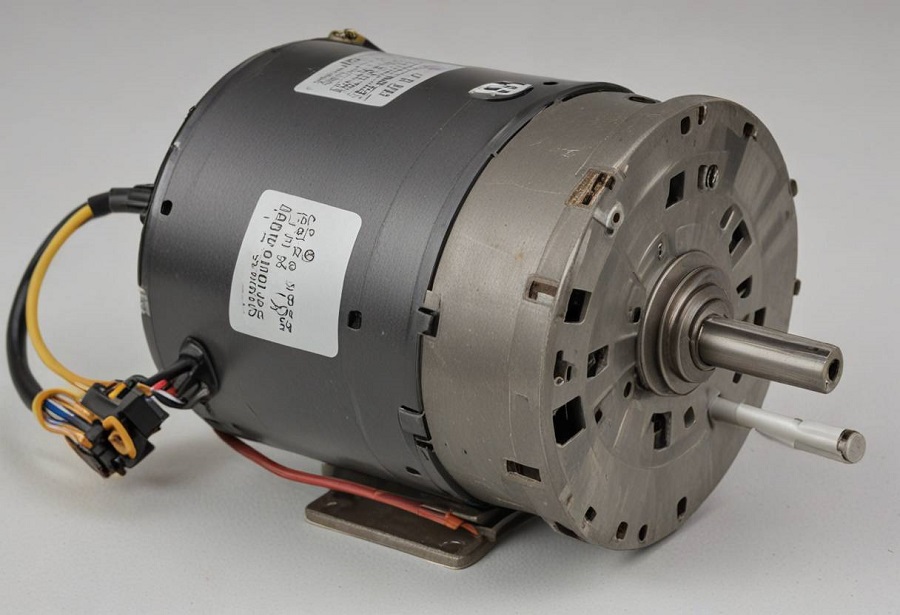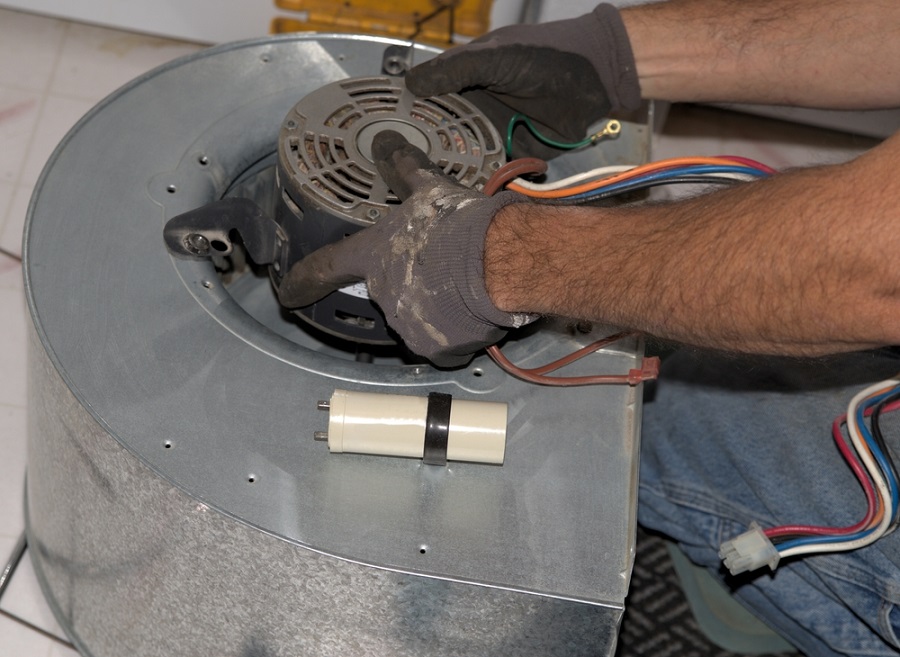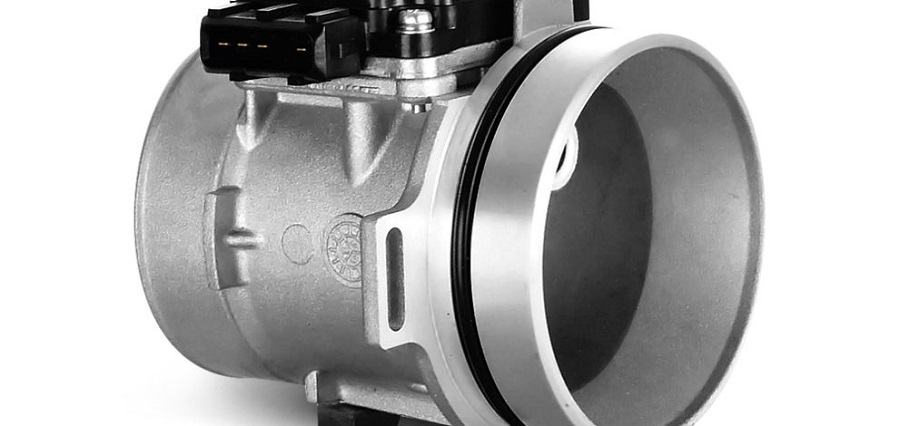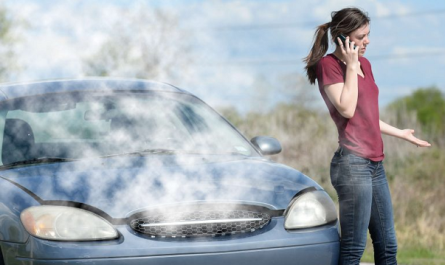Introduction
Bad blower motor symptoms, before discussing about symptoms, we need to know about blower motor.The blower motor is an essential part of your vehicle’s HVAC system. It is responsible for pushing air through the heating and cooling system and into the

cabin. The blower motor is usually located under the dashboard on the passenger side and is connected to the HVAC controls. When you adjust the fan speed in your vehicle, you’re controlling the blower motor, which in turn regulates the airflow intensity.
How Does a Blower Motor Work?
The blower motor operates using electrical power from the vehicle’s battery. It turns a fan that circulates air through the HVAC system’s ducts. The motor’s speed can be adjusted through a series of resistors or a control module, depending on your vehicle’s design. This allows you to set the desired airflow intensity within the cabin.
Importance of a Functional Blower Motor
A functional blower motor is vital for maintaining comfort inside your vehicle. Whether you’re trying to cool down on a hot day or warm up on a cold morning, the blower motor ensures that the heated or cooled air reaches you. Additionally, a properly working blower motor is crucial for defrosting your windows, as it directs air towards the windshield to clear away condensation.
Common Bad Blower Motor Symptoms
Recognizing bad blower motor symptoms early can prevent further damage to your vehicle’s HVAC system. Here are the most common signs that your blower motor might be failing:
Weak Airflow from Vents
One of the earliest and most noticeable bad blower motor symptoms of a bad blower motor is weak airflow from the vents. If you set the fan to the highest setting and still get only a small amount of air, it could be due to a failing blower motor. This issue might be caused by worn-out components inside the motor or a blockage in the HVAC system.
No Airflow at All
If your blower motor fails completely, you might experience no airflow from the vents, even when the fan is set to high. This bad blower motor symptoms is a strong indicator that the blower motor has failed, possibly due to electrical issues or a burnt-out motor.
Unusual Noises
A failing blower motor may produce unusual noises such as rattling, grinding, or squealing. These sounds can be caused by worn-out bearings, debris inside the motor, or a loose fan blade. If you hear these noises, it’s important to inspect the blower motor as soon as possible to prevent further damage.
Overheating Issues
An overheating blower motor can be another sign of trouble. If the motor is working harder than it should, it may overheat, leading to a burning smell or even smoke coming from the vents. Overheating can cause the motor to fail completely, so it’s important to address this issue immediately.
Blower Motor Only Works at Certain Speeds
If your blower motor only works at certain speeds or intermittently, it could be due to a faulty resistor or a failing motor. The resistor controls the blower motor’s speed, and when it fails, you may lose the ability to adjust the fan speed properly.
Causes of Blower Motor Failure
Understanding the causes of blower motor failure can help in diagnosing the problem and preventing future issues. Common causes include:
Electrical Issues
Electrical issues such as a blown fuse, faulty wiring, or a malfunctioning control module can prevent the blower motor from functioning correctly. These problems can cause intermittent operation or complete failure of the motor.
5.2 Worn-Out Bearings
Bearings inside the blower motor can wear out over time, leading to increased friction and noise. Worn-out bearings can eventually cause the motor to seize, resulting in no airflow from the vents.
Faulty Resistor
The resistor controls the blower motor’s speed by varying the electrical current. If the resistor fails, you may lose control over the fan speed, or the motor might only operate at one speed.
Accumulation of Debris
Debris such as leaves, dust, or other particles can accumulate inside the blower motor, causing it to work harder and eventually fail. Regular cleaning and maintenance can help prevent this issue.
How to Diagnose a Bad Blower Motor
Diagnosing a bad blower motor involves a combination of visual inspection and testing. Here are some steps you can take:
Visual Inspection
Start by visually inspecting the blower motor and its surroundings. Look for any obvious signs of damage, such as burnt wires, melted connectors, or debris lodged in the motor.
Testing with a Multimeter
Use a multimeter to test the electrical connections to the blower motor. Check for proper voltage at the motor’s terminals when the fan is set to different speeds. If there’s no voltage or it’s inconsistent, the problem could be with the wiring, resistor, or control module.
Checking the Resistor
Inspect the blower motor resistor for signs of damage, such as burnt spots or broken connections. If the resistor is faulty, replacing it might restore proper function to the blower motor.
Inspecting the HVAC Control Module
The HVAC control module manages the operation of the blower motor. If the module is faulty, it may not send the correct signals to the motor, resulting in poor performance or failure.

DIY vs. Professional Repair: Which is Right for You?
When dealing with bad blower motor symptoms, you might wonder whether to tackle the repair yourself or seek professional help. If you have basic mechanical skills and the right tools, you may be able to replace the blower motor or resistor on your own. However, if the problem is complex or involves electrical diagnostics, it’s best to consult a professional mechanic to avoid further damage.
Steps to Replace a Blower Motor
If you’ve determined that your blower motor needs to be replaced, here’s a step-by-step guide to help you through the process:
Tools You’ll Need
- Screwdrivers
- Socket set
- Pliers
- Multimeter
- New blower motor
Step-by-Step Replacement Guide
- Disconnect the Battery: Before starting, disconnect the negative terminal of your vehicle’s battery to avoid any electrical mishaps.
- Locate the Blower Motor: Usually found under the dashboard on the passenger side.
- Remove the Blower Motor: Unscrew the fasteners holding the blower motor in place and disconnect any electrical connectors.
- Install the New Blower Motor: Position the new motor in place, reconnect the electrical connectors, and secure it with the screws.
- Reconnect the Battery and Test: Reconnect the battery and test the blower motor by adjusting the fan speed.
Preventing Blower Motor Issues
Preventative maintenance can extend the life of your blower motor and ensure your HVAC system works efficiently.
Regular Maintenance
Routine inspections and maintenance of the HVAC system can help identify potential issues before they lead to blower motor failure.
Keeping the Air Intake Clean
Regularly check and clean the air intake near the windshield to prevent debris from entering the blower motor.
Timely Replacement of Cabin Air Filter
A clean cabin air filter can reduce the amount of debris entering the HVAC system, protecting the blower motor from damage.
Cost of Replacing a Blower Motor
The cost of replacing a blower motor varies depending on the make and model of your vehicle. On average, you can expect to pay between $150 and $300 for parts and labor. If you choose to do the repair yourself, you’ll only need to cover the cost of the part, which typically ranges from $50 to $150.
When to Seek Professional Help
If you’re unable to diagnose the problem or if the issue persists after replacing the blower motor, it’s time to consult a professional mechanic. Electrical issues and control module malfunctions can be complex and require specialized knowledge.
Impact of Ignoring Bad Blower Motor Symptoms
Ignoring bad blower motor symptoms can lead to further complications, including reduced visibility due to an inability to defrost windows and uncomfortable cabin temperatures. Prolonged use of a failing blower motor can also cause damage to other components in the HVAC system.
FAQs About Bad Blower Motor Symptoms
1. Can a bad blower motor drain my car battery?
Yes, if the blower motor is faulty and continues to draw power even when the vehicle is off, it can drain the battery.
2. How long does a blower motor typically last?
A blower motor can last anywhere from 10 to 15 years, depending on usage and maintenance.
3. Is it safe to drive with a bad blower motor?
While it won’t affect the engine’s operation, driving with a bad blower motor can be uncomfortable and unsafe if you can’t defrost your windows.
4. What causes a blower motor to stop working suddenly?
Common causes include electrical issues, a blown fuse, a failed resistor, or the motor itself burning out.
5. Can I repair a blower motor, or does it need to be replaced?
In some cases, you can repair a blower motor by cleaning it or replacing bearings. However, if the motor is burnt out, replacement is usually the best option.
6. How can I tell if my blower motor resistor is bad?
If the blower motor only works at certain speeds or not at all, the resistor might be faulty and should be inspected.
Conclusion
Recognizing and addressing bad blower motor symptoms is essential for maintaining your vehicle’s HVAC system and ensuring comfort during your drive. Whether it’s weak airflow, unusual noises, or complete failure, diagnosing the issue early can save you time and money. While some fixes can be done at home, don’t hesitate to seek professional help for more complex issues. Proper maintenance and timely repairs can keep your blower motor running smoothly for years to come.


